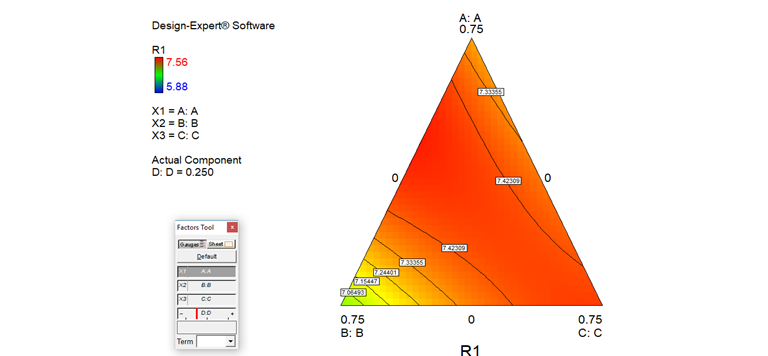JOURNAL 2736
Records of Agricultural and Food Chemistry
Year: 2023 Issue: 1 January-June
p.8 - 13
Viewed 2087 times.
GRAPHICAL ABSTRACT

ABSTRACT
For quality control, raw material, semi-finished, and finished product analysis in chemistry, biochemistry, food, and environmental sciences, well-designed experimental strategies are needed to perform all experimental studies at minimum cost and under optimum conditions. The steps in the experimental strategies essentially constitute the experimental procedure followed, and here the aim is to select a model for the experimental procedure, to determine the number of experiments and experimental factor limitations for each run, to identify the correlation between experimental results and factors, and to optimise the experimental factors. The response surface methodology as an experimental design method also reduces the number of experiments required for multi-factor trials for optimisation. Mixture design, a special type of response surface function, is a very effective method for determining the proportions of components or variables in a mixture. A three-component mixture is represented by a triangle, which is a two-dimensional cross-section of a three-dimensional space represented by a cube representing the region where the proportions of the three components are added up to 100%. The points within this triangle or blend area represent possible blends, where: three corners correspond to single components, points along the edges to binary mixtures, the dots in the triangle to triad mixtures, and the centre of the triangle to an equal mix of all three components. Several common designs can be considered as ways to determine the logical number and arrangement of points in a simplex, the most well-known being the Simplex Centroid and Simplex Lattice patterns. This study focused on an experimental design application for fourteen blends of olive oils from four cultivars A–D mixed in the design presented together with a taste panel score for each blend and statistical evaluation of the results for mixture design applications. The higher the score is the better the taste of the olive oil. Here, the mixture design chosen for optimising blending ratios was Simplex-Lattice, and DesignExpert 7.3 software was used for statistical analysis. Comparing of calculated correlation coefficients of the response surface function and its parameters, and function constants, it could be understood that as the correlation coefficient would be 0.21 for used linear terms only, adding quadratic terms into the function increases it to 0.92 drastically.
KEYWORDS- Olive oil
- blending
- mixture design
- response surface